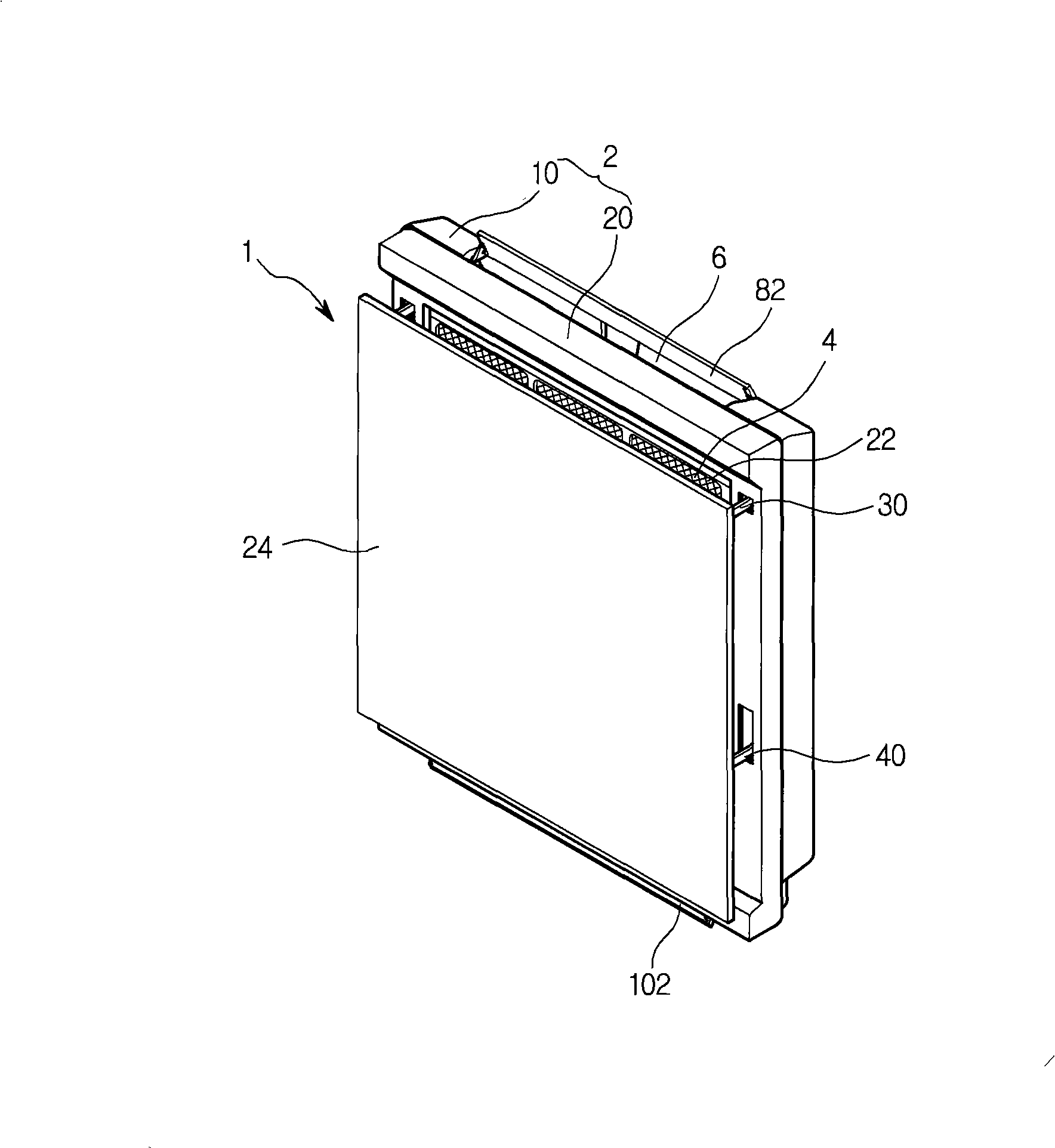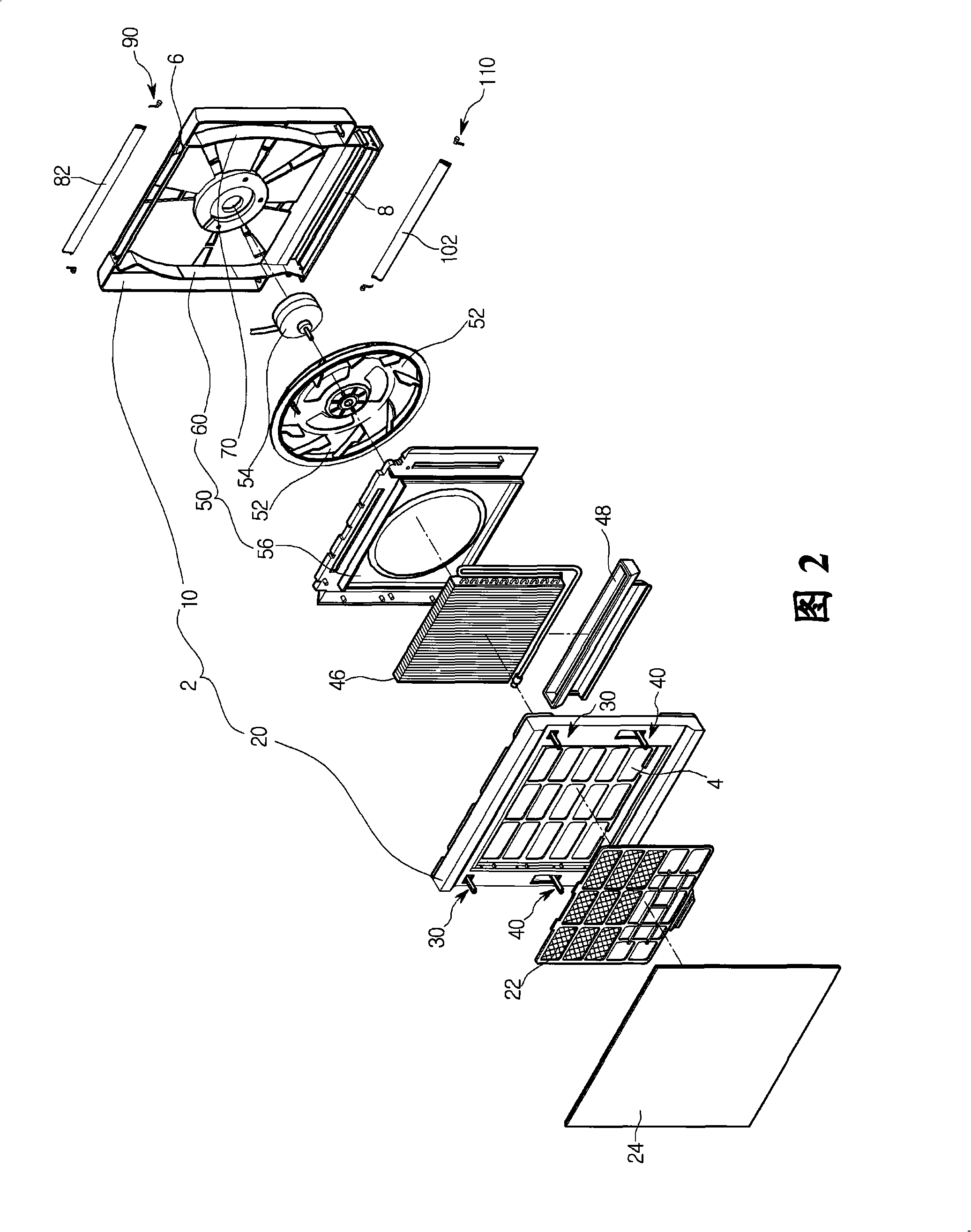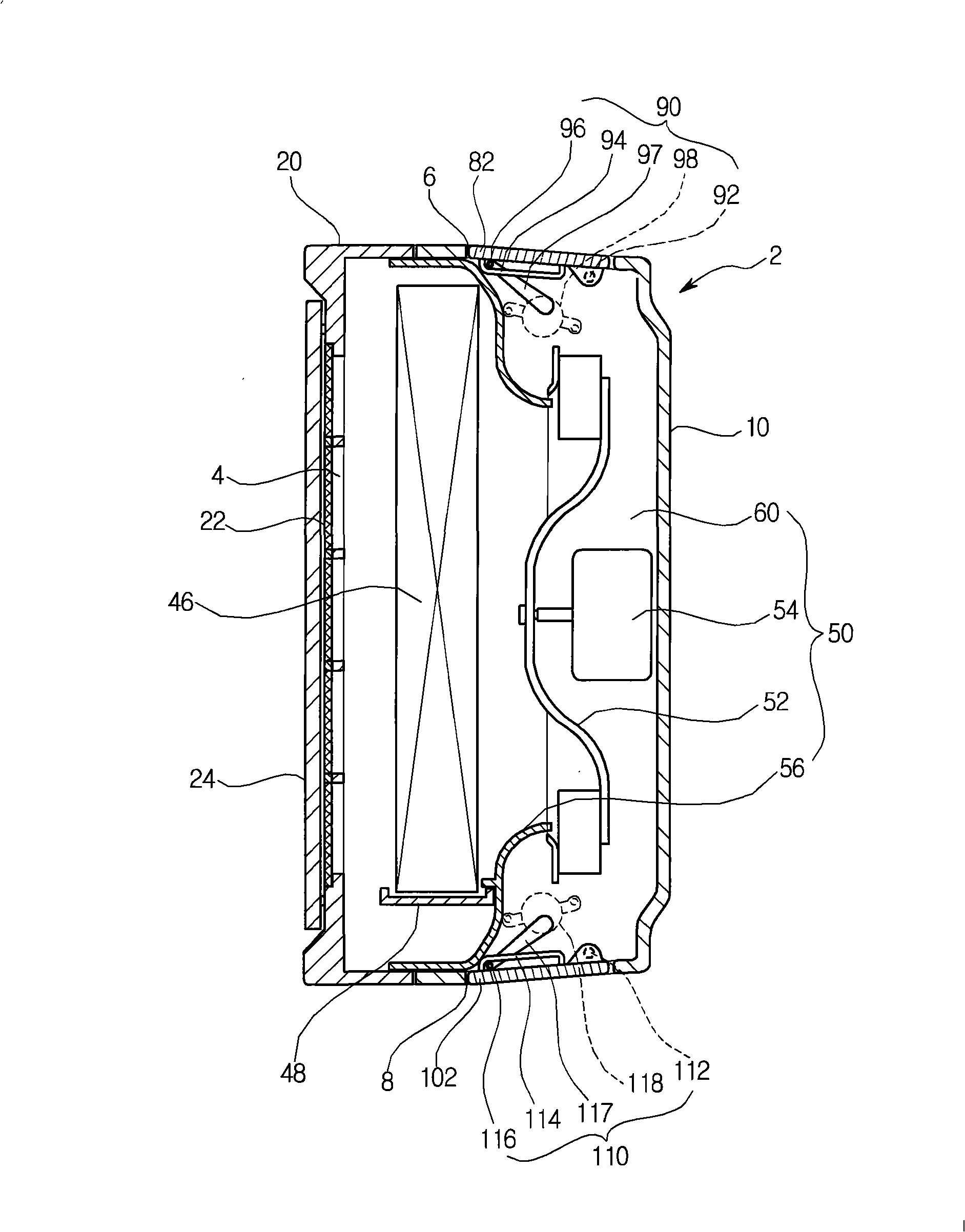Air conditioner
An air conditioner and air outlet technology, applied in the field of air conditioners, can solve problems such as user discomfort, and achieve the effects of simplifying the internal structure, minimizing the number, and avoiding costs.
- Summary
- Abstract
- Description
- Claims
- Application Information
AI Technical Summary
Problems solved by technology
Method used
Image
Examples
Embodiment Construction
[0021] Reference will now be made in detail to embodiments of the invention, examples of which are illustrated in the accompanying drawings.
[0022] figure 1 is a perspective view of the air conditioner according to the present embodiment, and FIG. 2 is an exploded perspective view of the air conditioner according to the present embodiment, image 3 is a cross-sectional view of the air conditioner when it is not in operation, Figure 4 is a cross-sectional view of the air conditioner in upper discharge mode, and Figure 5 is a cross-sectional view of the air conditioner in the lower discharge mode.
[0023] Figure 1 to Figure 5 An indoor unit of a wall-mounted air conditioner is shown, and the following description will be limited to the indoor unit of the air conditioner.
[0024] refer to Figure 1 to Figure 5 , The indoor unit 1 of the air conditioner according to the present embodiment includes a main body 2 constituting the exterior of the indoor unit 1 .
[0025]...
PUM
 Login to View More
Login to View More Abstract
Description
Claims
Application Information
 Login to View More
Login to View More - R&D
- Intellectual Property
- Life Sciences
- Materials
- Tech Scout
- Unparalleled Data Quality
- Higher Quality Content
- 60% Fewer Hallucinations
Browse by: Latest US Patents, China's latest patents, Technical Efficacy Thesaurus, Application Domain, Technology Topic, Popular Technical Reports.
© 2025 PatSnap. All rights reserved.Legal|Privacy policy|Modern Slavery Act Transparency Statement|Sitemap|About US| Contact US: help@patsnap.com



